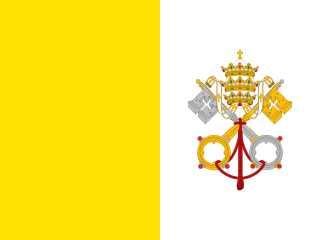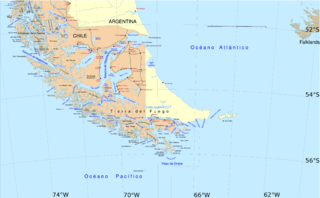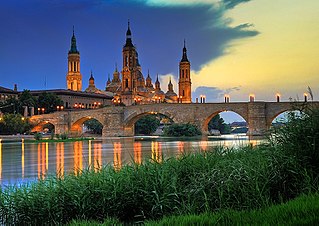
Carlos, Prince of Asturias, also known as Don Carlos, was the eldest son and heir-apparent of King Philip II of Spain. His mother was Maria Manuela of Portugal, daughter of John III of Portugal. Carlos was mentally unstable and was imprisoned by his father in early 1568, dying after half a year of solitary confinement. His fate was a theme in Spain's Black Legend, and inspired a play by Friedrich Schiller and an opera by Giuseppe Verdi.
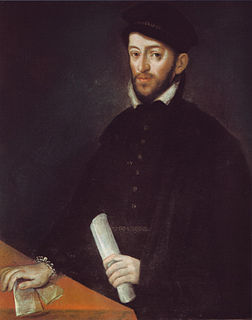
Antonio Pérez (1534–1611) was a Spanish statesman, secretary of king Philip II of Spain.
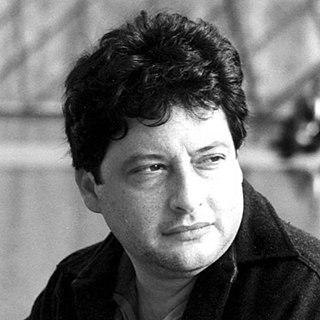
Andrés Mignucci FAIA is a Puerto Rican architect and urbanist. His work has received recognition for its integration of the disciplines of architecture, urban design and landscape architecture in the creation of public spaces with a sense of place, human scale, and environmental responsibility. In 2005 Andrés Mignucci was elected to the College of Fellows of the American Institute of Architects. In 2012, he was awarded the Henry Klumb Award by the Puerto Rico College of Architects. In 2019, Mignucci received the Distinguished Professor Award by the Association of Collegiate Schools of Architecture, and was named Arts and Literary Arts Scholar in Residence at the Rockefeller Foundation's Bellagio Center in Bellagio, Italy.

The Battle of Blaye of 1593, also known as the Battle of Bec d'Ambès or Battle of the Gironde Estuary, was a naval Spanish victory that took place on 18 April 1593 off Blaye and Bec d'Ambès, Gironde Estuary, France, during the seven-month siege of Blaye between the French-Protestant forces of Henry of Navarre and the French-Catholic garrison of the city led by Governor Jean-Paul d'Esparbès de Lussan d'Aubeterre, in the context of the French Wars of Religion and the Anglo-Spanish War (1585–1604).
Giovanni Battista Calvi was an Italian military engineer at the service of the Spanish Monarchy during the 16th century.

Between April and June 1563 the Regency of Algiers launched a major military campaign to retake the Spanish military-bases of Oran and Mers el Kébir on the North African coast, occupied by Spain since 1505. The sieges of Oran and Mers El Kébir of 1563 represented a major Hispano-Algerian episode in the larger Ottoman-Habsburg wars of the Mediterranean. The kingdom of Algiers, the principalities of Kabyle and other vassal tribes combined forces as one army under Hasan Pasha, son of Hayreddin Barbarossa, and Jafar Catania. The Spanish commander brothers, Alonso de Córdoba Count of Alcaudete and Martín de Córdoba, managed to hold the strongholds of Oran and Mers El Kébir, respectively, until the relief fleet of Francisco de Mendoza arrived to successfully defeat the offensive.

Europa Press is a Spanish independent, privately held news agency published in Spanish, established in Madrid in 1957.

The Charles V Wall is a 16th-century defensive curtain wall that forms part of the fortifications of the British Overseas Territory of Gibraltar. It was built in 1540 and strengthened in 1552 by Holy Roman Emperor Charles V. The wall remains largely intact and extends from South Bastion, which was once at the water's edge in the harbour, to the top ridge of the Rock of Gibraltar.
Giovan Giacomo Paleari Fratino (1520–1586), known as El Fratin or Il Fratino, was a military engineer who served the Spanish Emperor Charles V, and then his son Philip II of Spain. He is known for having designed the first Martello tower as well as many other fortifications.
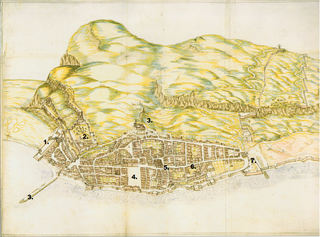
Luis Bravo de Acuña was a Spanish soldier known for his work on the fortifications of Gibraltar who also served as Spanish Minister of War, Ambassador to Venice and Viceroy of Navarre.

Cristóbal de Rojas was a Spanish military engineer and architect. He is known for working as an assistant to Juan de Herrera in the construction of the monastery of El Escorial.

The Moorish Wall, also known as the Philip II Wall and formerly the Muralla de San Reymondo is a defensive curtain wall built in the 16th century that formed part of the southern fortifications of the British Overseas Territory of Gibraltar. It was completed by 1575. The wall ran from the top of a steep cliff above the lower section of the Charles V Wall up the slope of the Rock of Gibraltar to its crest, north of the upper section of the Charles V Wall and is now within the Upper Rock Nature Reserve.
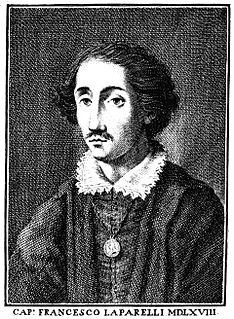
Francesco Laparelli da Cortona was an Italian architect. He was an assistant of Michelangelo, and later was sent by the Pope to supervise the construction of Valletta in Malta.

La Ventosilla is a large "country house" near Burgos in Spain that was built at the start of the seventeenth century for Juan Fernandez de Velasco, the Constable of Castille.

Ruth Rivera Marín was a Mexican architect. Her professional experience centered on teaching, institutional management, theory and practice related to architecture. She was the first woman student of the College of Engineering and Architecture at the National Polytechnic Institute.
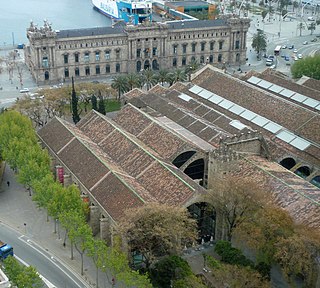
The Maritime Museum of Barcelona (MMB) is located in the building of Drassanes Reials de Barcelona , the royal arsenal of Barcelona, dedicated to shipbuilding between the thirteenth century and eighteenth century. The first mention of these arsenals date from 1243 in a document indicating the boundaries of the city of Barcelona where it mentions its shipyard.

Antón Losada Diéguez was a writer, Spanish politician, member of the Irmandades da Fala of Ourense, impulsor of the magazine Nós and correspondent of the Royal Galician Academy. He was author of half a dozen books of poetry, seven books, two political writings, the incomplete work A domeadora and the speech Ouservacións encol da prosa galega. He became a member in the Seminar of Galician Studies. He was honoured on the Day of the Galician Letters of 1985.
Juan Simón's Daughter is a 1935 Spanish musical drama film directed by Nemesio M. Sobrevila and José Luis Sáenz de Heredia. It is based on the musical play La hija de Juan Simón by Sobrevila. A second film version Juan Simón's Daughter was released in 1957.

Segundo Cardona FAIA is a Puerto Rican architect and developer. His work has been recognized by the American Institute of Architects (AIA), by the Colegio de Arquitectos y Arquitectos Paisajistas de Puerto Rico as well as by the International Union of Architects. In 2006 Cardona was elected as Fellow of the American Institute of Architects. In 1992, he was awarded the Henry Klumb Award by the CAAPPR.

![Philip III of Spain King of Castile and León and King of Aragon and Portugal [[Plantengent Capet Valios Berry]]](https://upload.wikimedia.org/wikipedia/commons/thumb/4/4d/Andres_L%C3%B3pez_001.jpg/230px-Andres_L%C3%B3pez_001.jpg)


